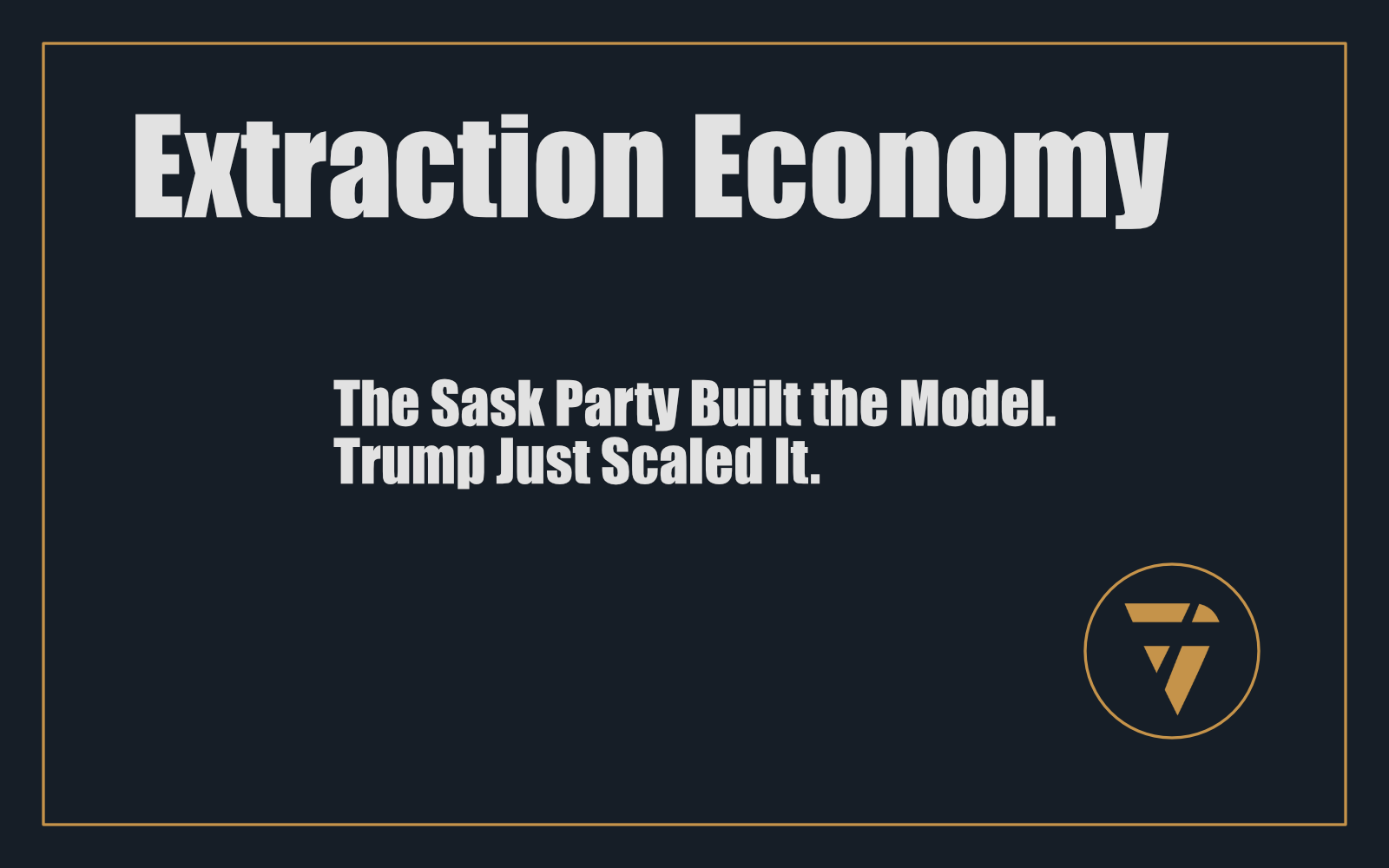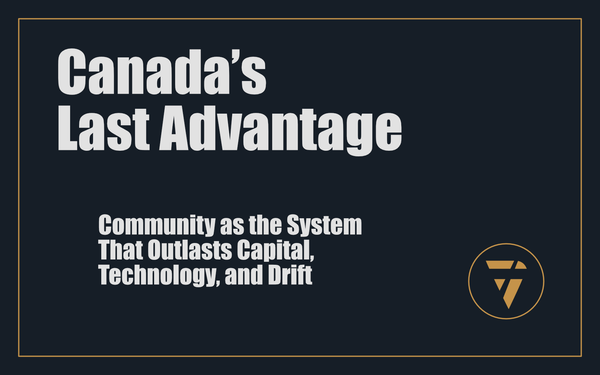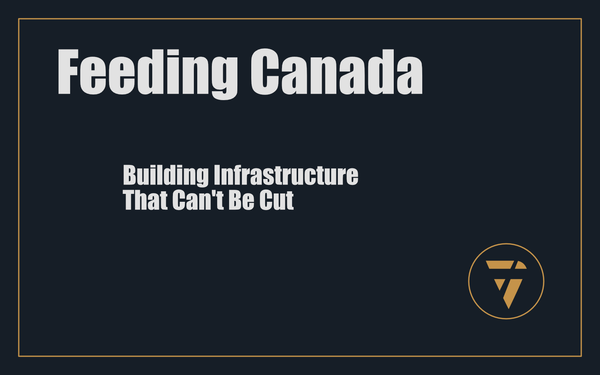Extraction Economy

The Sask Party Built the Model. Trump Just Scaled It.
The legacy of Tommy Douglas casts a long shadow. The first universal health care system. The farmer-politician who faced down the medical establishment. Saskatchewan was supposed to be the beating heart of public good... the template for what a sovereign, equitable state could become.
They still think we’re the home of Medicare.
But history got hijacked.
The world still sees Tommy.
But under the surface, they’re getting Trump.
Because Saskatchewan is no longer the symbol of public innovation. It’s the case study for something else entirely.
Saskatchewan residents, per capita, would be the wealthiest individuals on the planet, if they had just kept the money that was theirs.
The Extraction Economy.
Not a slogan.
Not a metaphor.
An operating system.
What began as a slow erosion under Grant Devine became a deliberate architecture under the Sask Party. Over three decades, the province was transformed from a civic economy into a capital conduit... not for growth, but for withdrawal.
The point wasn’t to build.
The point was to hollow out.
The point is to take.
As Trump ascends again in the U.S., his policy architecture doesn’t look like Reagan or Bush.
It looks like Regina.
The Game They Played
This isn’t about ideology. It’s about function.
Saskatchewan didn’t just shift right. It didn’t just cut taxes or fight unions.
It rewrote the job description of government, from steward to siphon.
Let’s break it down:
1. Privatise the Commons
Crown corporations were never just utilities. They were economic firewalls, public levers designed to keep wealth circulating within the province.
SaskPower, SaskTel, STC, SGI.
Each one dismantled, corporatised, or structurally undermined.
It wasn’t ideological. It was surgical. These were revenue-producing engines. But public revenue is inconvenient in an extraction economy. It empowers the state. It resists dependency. It creates civic momentum.
So they had to go.
2. Transfer Wealth by Regulation
Next came the regulatory state, not to restrain corporate power, but to reroute it.
Environmental oversight? Gutted.
Labour protections? Weakened.
Royalty regimes? Designed with a wink and a waiver.
The public was told it was about competitiveness. Investment. Jobs.
But the balance sheets tell a different story.
Math. Finance. Cons should try it.
The richest natural resources in the country — potash, uranium, oil, land — systematically converted into offshore profit. Value pulled from earth and sent to shareholders. Not a dime returned in infrastructure, housing, or healthcare.
3. Weaponise Austerity
As revenue disappeared, so did services.
But not because they were unaffordable. Because collapse was the plan.
Education defunded.
Healthcare starved.
Public transit dismantled.
The failure of public systems wasn’t an accident. It was a setup. Because once a system fails, privatization becomes rescue.
This is how you turn a citizen into a customer, by leaving them with no other choice.
4. Suppress Resistance with Culture War
You can’t run this model in silence. You need noise.
So you manufacture it.
Enter Racquel et. al.
Wedge issues. Identity outrage. Rural vs urban warfare.
You make the public fight about flags, bathrooms, and masks.
All while the real war — the economic one — is executed with precision in the background.
And it works.
Because outrage burns hotter than policy.
And division is easier to manage than dissent.
5. Export the Playbook
Once the system was proven to function electorally, it didn’t need camouflage. It needed scale.
This is what Trump sees.
He didn’t invent economic extraction.
He inherited a refined version — tested, polished, and normalized on the prairies.
Nice of Stephen and his team to provide such a nice model, with all the ideology and application provided.
The tax structures.
The regulatory sabotage.
The public theatre of outrage hiding private capture.
Trump didn’t build a new America.
He borrowed the Saskatchewan model, and gave it a bigger stage.
What This Really Means
This isn’t a Canadian tragedy.
It’s an international export.
Saskatchewan is no longer just a prairie province. It’s an ideological franchise, showing the world how to gut a state without triggering revolt.
The genius wasn’t in the policy. It's in the disguise.
Run as a populist. Govern as a corporate proxy. Strip the state. Blame the left.
Then hand the keys to finance.
Trump doesn’t need to conquer the Canadian West.
It’s already his.
Not because of the border. Because of the model.
The Sask Party didn’t imitate American conservatism.
It built it — before the U.S. was even ready.
And now it’s everywhere.
And Pierre wants it too.
Call to Clarity
The point here isn’t nostalgia.
It’s not about mourning the loss of Crown corporations or waving the flag of Tommy Douglas.
It’s about naming the architecture that replaced it.
Because the greatest lie Saskatchewan ever told itself is that it’s still a province.
It’s not.
It’s a platform.
For capital. For capture. For conquest by legislation.
And until we admit that — we are not resisting Trumpism.
We are marketing it.
This is the Extraction Economy.
And unless you’re profiting from it, you’re being drained by it.
So don’t just critique Alberta.
Don’t just fear Trump.
Look at Regina.
And tell the truth.
This is what I’m working on. Tell me what you think, I enjoy the conversation! Subscribe and follow the work in real time.
Thanks!
B

Saskatchewan residents should be the richest people on earth.
They had the resources.
They had the infrastructure.
They had the model.
They just gave away the money.
PS -






